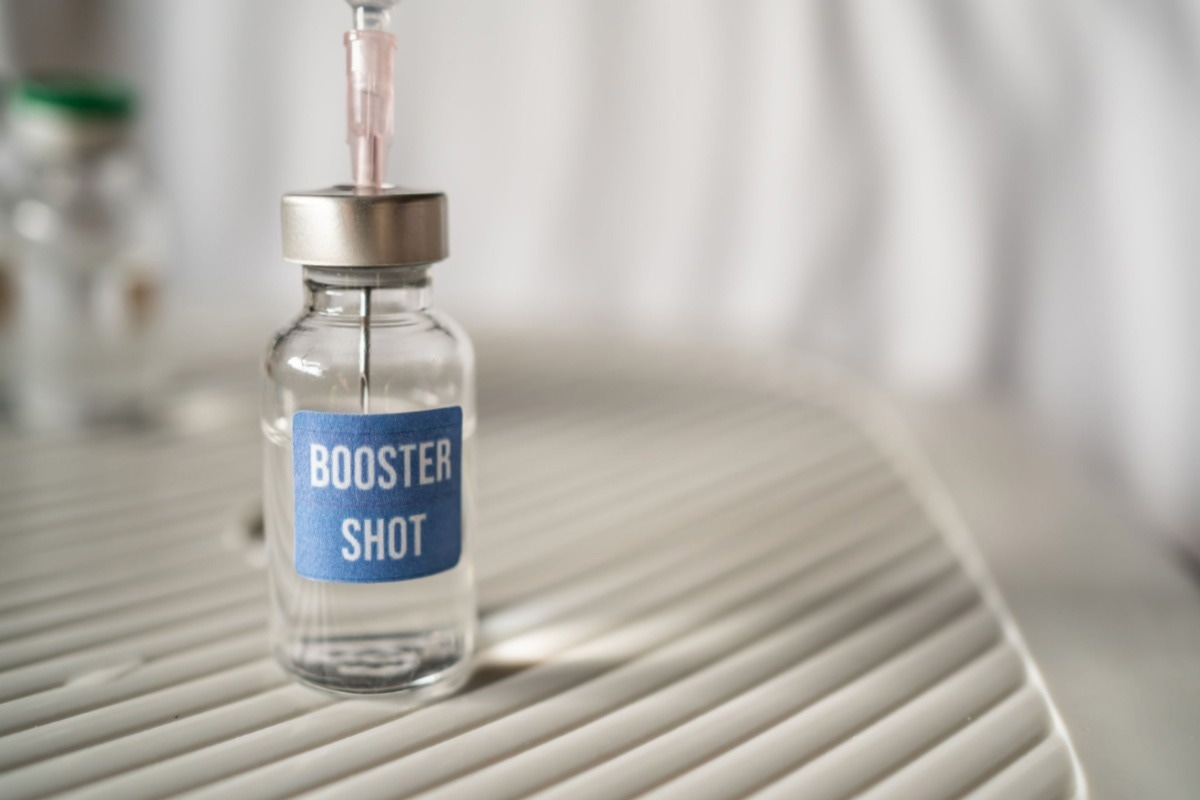A recent article published in the Centers for Disease Control and Prevention (CDC) Morbidity and Mortality Weekly Report (MMWR) monitored the safety of the second booster dose of severe acute respiratory syndrome coronavirus 2 (SARS-CoV-2) messenger ribonucleic acid (mRNA) vaccination among those ≥50 Years.
 Study: Safety Monitoring of COVID-19 mRNA Vaccine Second Booster Doses Among Adults Aged ≥50 Years — United States, March 29, 2022–July 10, 2022. Image Credit: Wachiwit/Shutterstock
Study: Safety Monitoring of COVID-19 mRNA Vaccine Second Booster Doses Among Adults Aged ≥50 Years — United States, March 29, 2022–July 10, 2022. Image Credit: Wachiwit/Shutterstock
Background
According to the Advisory Committee on Immunization Practices (ACIP), all individuals aged five years or older should receive one booster dose of the coronavirus disease 2019 (COVID-19) vaccine upon completing their initial vaccination series. For people aged 50 or older and moderate to severely immunocompromised individuals aged 12 years or older, the Food and Drug Administration (FDA) approved a second mRNA booster vaccination on 29 March 2022, approximately four months after receiving the first booster dose. Moreover, about 16.8 million Americans aged 50 or older received a fourth dose of the SARS-CoV-2 vaccine between 29 March and 10 July 2022.
About the study
In the present work, CDC reviewed adverse reactions and health impact evaluations reported to the Vaccine Adverse Event Reporting System (VAERS) and v-safe after receiving a second dose of COVID-19 mRNA booster vaccination between 29 March and 10 July 2022. They assessed the safety of a second SARS-CoV-2 mRNA booster vaccination among people 50 years or older.
VAERS is a passive monitoring system in the United States (U.S.) managed by FDA and CDC, tracking adverse events post-vaccination. Further, v-safe is a voluntary active monitoring system based on the smartphone in the U.S. that keeps track of detrimental side effects following SARS-CoV-2 vaccination.
Systemic and local responses and health implications recorded in the week following the second booster vaccination were documented for v-safe registrants aged 50 years or older who reported a second booster vaccination from 29 March to 10 July 2022, four months or more after their initial booster dose. In addition, the study was restricted to registrants who received mRNA vaccines (both heterologous and homologous), accomplished a minimum of one daily health assessment after the second booster dose, and one survey after the previous vaccination.
A multivariable generalized estimating equations framework controlled for demographic factors and repeated measurements compared the likelihood of registrants vaccinated with homologous mRNA vaccines reporting an adverse reaction or health implications after the second booster dose and earlier doses. Since previous evaluations found distinct reporting patterns between recipients of homologous Janssen and heterologous mRNA booster vaccination, comparisons of health impacts and adverse responses by vaccine dose were limited to people vaccinated with homologous mRNA vaccines.
Additionally, VAERS adverse event reports following a second booster dose were described using demographic information, serious and non-serious classifications, and medical dictionary for regulatory activities (MedDRA) preferred terms (PTs).
Results
The study results indicated systemic and injection site responses were less common after the second booster dose versus following the initial booster dose among v-safe registrants vaccinated with homologous COVID-19 mRNA vaccines. Reactions were generally less widely reported by v-safe registrants aged 50 years or older after a second booster dose than adults aged 18 years or older after an initial booster dose. Since 65 years or older v-safe subjects were less likely to report reactions following SARS-CoV-2 vaccination than younger adults, this variation was expected.
Among people aged 50 years or older, VAERS contained 8,515 adverse event reports following second mRNA booster vaccination, including 8,073 non-serious, i.e., 94.8%, and 442 serious, i.e., 5.1%, side effects. SARS-CoV-2 infection was the most commonly reported event across non-serious and serious VAERS reports; this was not surprising given the COVID-19 pandemic's current epidemiology.
The average decedent age surpassed the average age for all reports of VAERS across the 40 death reports following second booster doses. Adults aged 50 or older had higher reporting rates for deaths following initial COVID-19 vaccination, which was congruent with the adult population's overall mortality rates by age. No vaccine-related mortalities were found among these reports upon reviewing the information available.
Conclusions
According to the study findings, people aged 50 or older vaccinated with homologous mRNA COVID-19 vaccines were less likely to experience systemic or injection site reactions following a second booster dose than the initial booster dose. Moreover, of the 8,515 adverse events reported to the VAERS, around 95% were non-serious.
Together, CDC suggests that after receipt of the second dose of the SARS-CoV-2 mRNA booster vaccine, patients and healthcare professionals should be informed that both local and systemic responses are common and that significant adverse effects are rare. In addition, the authors noted that the FDA and CDC will continue to evaluate vaccine safety and will issue updates as needed to inform COVID-19 vaccination guidelines.